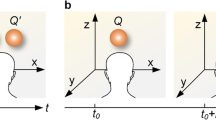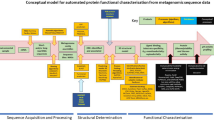Abstract
This is a digest of how various researchers in biology and astrobiology have explored questions of what defines living organisms—definitions based on functions or structures observed in organisms, or on systems terms, or on mathematical conceptions like closure, chirality, quantum mechanics and thermodynamics, or on biosemiotics, or on Darwinian evolution—to clarify the field and make it easier for endeavors in artificial intelligence to make progress. Current ideas are described to promote work between astrobiologists and computer scientists, each concerned with living organisms. A four-parameter framework is presented as a scaffold that is later developed into what machines lack to be considered alive: systems, evolution, energy and consciousness, and includes Jagers operators and the idea of dual closure. A novel definition of consciousness is developed which describes mental objects both with and without communicable properties, and this helps to clarify how consciousness in machines may be studied as an emergent process related to choice functions in systems. A perspective on how quantization, acting on nucleic acids, sets up natural limits to system behavior is offered as a partial address to the problem of biogenesis.
Similar content being viewed by others
References
Alvarez W, Claeys P, Kieffer SW (1995) Emplacement of Cretaceous-Tertiary boundary shocked quartz from Chicxulub crater. Science 269(5226):930–935. doi: https://doi.org/10.1126/science.269.5226.930
Bachmann PA, Luisi PL, Lang J (1992) Autocatalytic self-replicating micelles as models for prebiotic structures. Nature 357(6373):57–59. doi:https://doi.org/10.1038/357057a0
Banach S, Tarski A (1924) “Sur la décomposition des ensembles de points en parties respectivement congruentes”. Fundamenta Mathematicae (in French). 6: 244–277. Retrieved from http://matwbn.icm.edu.pl/ksiazki/or/or1/or1116.pdf
Barbieri M (2008) Biosemiotics: A new understanding of life. Naturwissenschaften 95(7):577–599. doi: https://doi.org/10.1007/s00114-008-0368-x
Benner SA, Ricardo A, Carrigan MA (2004) Is there a common chemical model for life in the universe? Curr Opin Chem Biol 8(6):672–689. doi: https://doi.org/10.1016/j.cbpa.2004.10.003
Borovik A (2009) Mathematics under the microscope: Notes on cognitive aspects of mathematical practice. American Mathematical Soc
Bourgine P, Stewart J (2004) Autopoiesis and cognition. Artif Life 10(3):327–345. doi: https://doi.org/10.1162/1064546041255557
Brooks DR, Wiley EO (1984) Evolution as an entropic phenomenon. Evolutionary Theory: Paths to the Future. John Wiley and Sons, London, pp 141–171
Buckel W, Thauer RK (2013) Energy conservation via electron bifurcating ferredoxin reduction and proton/Na + translocating ferredoxin oxidation. Biochim et Biophys Acta (BBA)-Bioenergetics 1827(2):94–113. doi: https://doi.org/10.1016/j.bbabio.2012.07.002
Buluta I, Ashhab S, Nori F (2011) Natural and artificial atoms for quantum computation. Rep Prog Phys 74(10):104401. doi: https://doi.org/10.1088/0034-4885/74/10/104401
Cech TR (1986) RNA as an enzyme. Sci Am 255(5):64–75. doi: https://doi.org/10.1038/scientificamerican1186-64
Chen GQ, Frid H (2001) On the theory of divergence-measure fields and its applications. Bol da Sociedade Brasileira de Matematica-Bulletin/Brazilian Math Soc 32(3):401–433. doi: https://doi.org/10.1007/BF01233674
Cleland CE, Chyba CF (2002) Defining ‘life’. Orig Life Evol Biosph 32(4):387–393. doi: https://doi.org/10.1023/A:1020503324273
Collier J (1986) Entropy in evolution. Biol Philos 1(1):5–24. doi: https://doi.org/10.1007/BF00127087
Damer B, Deamer D (2020) The hot spring hypothesis for an origin of life. Astrobiology 20(4):429–452. doi: https://doi.org/10.1089/ast.2019.2045
Davies PCW (2004) Does quantum mechanics play a non-trivial role in life? BioSystems 78(1–3):69–79. doi: https://doi.org/10.1016/j.biosystems.2004.07.001
Davies PC, Rieper E, Tuszynski JA (2013) Self-organization and entropy reduction in a living cell. BioSystems 111(1):1–10. doi: https://doi.org/10.1016/j.biosystems.2012.10.005
Deamer DW (1986) Role of amphiphilic compounds in the evolution of membrane structure on the early Earth. Orig Life Evol Biosph 17(1):3–25
Deltete RJ, Guy RA (1997) Hartle-Hawking cosmology and unconditional probabilities. Analysis, 57(4), 304–315. Retrieved from http://www.jstor.org/stable/3328093
England JL (2015) Dissipative adaptation in driven self-assembly. Nat Nanotechnol 10(11):919–923. doi: https://doi.org/10.1038/nnano.2015.250
Frampton PH, Volovich I (1990) Cosmogenesis and primary quantization. Mod Phys Lett A 5(23):1825–1832. doi: https://doi.org/10.1142/S0217732390002080
Georgiev GY, Chatterjee A (2016) The road to a measurable quantitative understanding of self-organization and evolution. In G. Jagers op Akkerhuis (Ed) Evolution and Transitions in Complexity. Springer, Cham. doi: https://doi.org/10.1007/978-3-319-43802-3_15
Gilat G (2002) Physical chirality. It feeds on negative entropy. arXiv preprint. Retrieved from http://arxiv.org/pdf/physics/0206074.pdf
Ginsburg I, Lingam M, Loeb A (2018) Galactic panspermia. Astrophys J Lett 868(1):L12. doi: https://doi.org/10.3847/2041-8213/aaef2d/meta
Gleiser M, Thorarinson J, Walker SI (2008) Punctuated chirality. Origins of Life and Evolution of Biospheres 38(6):499–508. doi: https://doi.org/10.1007/s11084-008-9147-0
Gleiser M, Walker SI (2008) The chirality of life: From phase transitions to astrobiology. arXiv preprint arXiv:0811.1291. Retrieved from https://arxiv.org/pdf/0811.1291
Goderis S, Sato H, Ferrière, the IODP-ICDP Expedition Scientists (2021) Globally distributed iridium layer preserved within the Chicxulub impact structure. Sci Adv 7(9):eabe3647. doi: https://doi.org/10.1126/sciadv.abe3647
Goldstein S (2001) Boltzmann’s approach to statistical mechanics. In: Bricmont J, Ghirardi G, Dürr D, Petruccione F, Galavotti MC, Zanghi N (eds) Chance in Physics: Foundations and Perspectives. Springer, Berlin, pp 39–54. doi: https://doi.org/10.1007/3-540-44966-3_3
Griffith V, Koch C (2014) Quantifying synergistic mutual information. Guided self-organization: inception. Springer, Berlin, Heidelberg, pp 159–190. doi: https://doi.org/10.1007/978-3-642-53734-9_6
Hameroff SR (1998) Did Consciousness Cause the Cambrian Evolutionary Explosion? In: Hameroff SR, Kaszniak AW, Scot A (eds) Toward a Science of Consciousness II: The Second Tucson Discussions and Debates. MIT Press, Cambridge, MA, USA, pp 421–438
Harder M, Salge C, Polani D (2013) Bivariate measure of redundant information. Phys Rev E 87(1):012130. doi: https://doi.org/10.1103/PhysRevE.87.012130
Hoffmeyer J (2008) Biosemiotics: An examination into the signs of life and the life of signs. University of Scranton Press
Horneck G, Rettberg P, Reitz G, Wehner J, Eschweiler U, Strauch K, Panitz C, Starke V, Baumstark-Khan C (2001) Protection of bacterial spores in space, a contribution to the discussion on panspermia. Orig Life Evol Biosph 31(6):527–547. doi: https://doi.org/10.1023/A:1012746130771
Igamberdiev AU (2008) Objective patterns in the evolving network of non-equivalent observers. BioSystems 92(2):122–131. doi: https://doi.org/10.1016/j.biosystems.2008.01.002
Jagers op Akkerhuis GAJM (2010) Towards a hierarchical definition of life, the organism, and death. Found Sci 15(3):245–262
Jagers op Akkerhuis GAJ, M. (eds) (2016) Evolution and transitions in complexity: The science of hierarchical organization in nature. Springer
Jagers op Akkerhuis GAJM, van Straalen NM (1999) Operators, the Lego-bricks of nature: Evolutionary transitions from fermions to neural networks. World Futures: The Journal of New Paradigm Research 53(4):329–345
Kitson PJ, Rosnes MH, Sans V, Dragone V, Cronin L (2012) Configurable 3D-Printed millifluidic and microfluidic ‘lab on a chip’reactionware devices. Lab Chip 12(18):3267–3271
LaBean TH (2003) Introduction to self-assembling DNA nanostructures for computation and nanofabrication. World Scientific. doi: https://doi.org/10.1142/9789812564498_0002
Lande R (1988) Genetics and demography in biological conservation. Science 241(4872):1455–1460. doi: https://doi.org/10.1126/science.3420403
Levine IN, Busch DH, Shull H (2009) Quantum chemistry, vol 6. Pearson Prentice Hall, Upper Saddle River, NJ
Lizier JT (2014) JIDT: An information-theoretic toolkit for studying the dynamics of complex systems. Front Rob AI 1:11. doi: https://doi.org/10.3389/frobt.2014.00011
Lovelock JE, Margulis L (1974) Atmospheric homeostasis by and for the biosphere: the Gaia hypothesis. Tellus 26(1–2):2–10
Luisi PL, Giomini M, Pileni MA, Robinson BH (1988) Reverse micelles as hosts for proteins and small molecules. Biochim et Biophys Acta (BBA)-Reviews Biomembr 947(1):209–246. doi:https://doi.org/10.1016/0304-4157(88)90025-1
Luisi PL, Walde P, Oberholzer T (1999) Lipid vesicles as possible intermediates in the origin of life. Curr Opin Colloid Interface Sci 4(1):33–39. doi:https://doi.org/10.1016/S1359-0294(99)00012-6
Mann S (ed) (1995) Biomimetic materials chemistry. John Wiley & Sons
Mann S, Ozin GA (1996) Synthesis of inorganic materials with complex form. Nature 382(6589):313–318. doi:https://doi.org/10.1038/382313a0
Margulis L (1981) Symbiosis in cell evolution: Life and its environment on the early earth. WH Freeman & Co
Martin W, Rujan T, Richly E, Hansen A, Cornelsen S, Lins T, Penny D (2002) Evolutionary analysis of Arabidopsis, cyanobacterial, and chloroplast genomes reveals plastid phylogeny and thousands of cyanobacterial genes in the nucleus. Proceedings of the National Academy of Sciences, 99(19), 12246–12251. doi: https://doi.org/10.1073/pnas.182432999
Mathis C, Bhattacharya T, Walker SI (2017) The emergence of life as a first-order phase transition. Astrobiology 17(3):266–276. doi:https://doi.org/10.1089/ast.2016.1481
Mellersh AR (1993) A model for the prebiotic synthesis of peptides which throws light on the origin of the genetic code and the observed chirality of life. Orig Life Evol Biosph 23(4):261–274
Milnes PJ, McKee ML, Bath J, Song L, Stulz E, Turberfield AJ, O’Reilly RK (2012) Sequence-specific synthesis of macromolecules using DNA-templated chemistry. Chem Commun 48(45):5614–5616. doi: https://doi.org/10.1039/C2CC31975F
Morowitz H (1992) Beginnings of Cellular Life: Metabolism Recapitulates Biogenesis. Yale University Press
Mullen L (2013) : August 2). Defining Life: Q&A with Scientist Gerald Joyce. Astrobiology Magazine. Retrieved 12 March 2022 from https://www.space.com/22210-life-definition-gerald-joyce-interview.html
Orlando L, Cooper A (2014) Using ancient DNA to understand evolutionary and ecological processes. Annu Rev Ecol Evol Syst 45:573–598. doi: https://doi.org/10.1146/annurev-ecolsys-120213-091712
Perunov N, Marsland R, England J (2014) Statistical physics of adaptation. ArXiV [preprint]. Retrieved from http://arxiv.org/pdf/1412.1875v1.pdf
Rapp PE (1987) Why are so many biological systems periodic? Prog Neurobiol 29(3):261–273. doi: https://doi.org/10.1016/0301-0082(87)90023-2
Rozanski K, Johnsen SJ, Schotterer U, Thompson LG (1997) Reconstruction of past climates from stable isotope records of palaeo-precipitation preserved in continental archives. Hydrol Sci J 42(5):725–745. doi: https://doi.org/10.1080/02626669709492069
Schneider ED, Kay JJ (1994) Complexity and thermodynamics: Towards a new ecology. Futures 26(6):626–647. doi: https://doi.org/10.1016/0016-3287(94)90034-5
Schrödinger E (1944) What is life? The physical aspect of the living cell. Cambridge University Press
Shannon CE (1948) A mathematical theory of communication. Bell Syst Tech J 27(3):379–423. doi: https://doi.org/10.1002/j.1538-7305.1948.tb01338.x
Shaw CA, Seneff S, Kette SD, Tomljenovic L, Oller JW, Davidson RM (2014) Aluminum-induced entropy in biological systems: implications for neurological disease. Journal of Toxicology, 2014. doi: https://doi.org/10.1155/2014/491316
Tamulis A, Tamulis V, Ziriakoviene A (2004) Quantum mechanical design of molecular computers elements suitable for self-assembling to quantum computing living systems. In Solid State Phenomena. Trans Tech Publications Ltd 97:173–180. doi: https://doi.org/10.4028/www.scientific.net/SSP.97-98.173
Thomas G, Sabelli H, Kauffman L, Kovacevic L (2006) Biotic patterns in the Schrödinger’s equation and the early universe. InterJournal Complex Systems, 1787. Retrieved from http://www.necsi.edu/events/iccs6/papers/b7794439dbc6b0515c7659d6088d.pdf
Tirard S, Morange M, Lazcano A (2010) The definition of life: a brief history of an elusive scientific endeavor. Astrobiology 10(10):1003–1009. doi: https://doi.org/10.1089/ast.2010.0535
Walde P, Wick R, Fresta M, Mangone A, Luisi PL (1994) Autopoietic self-reproduction of fatty acid vesicles. J Am Chem Soc 116(26):11649–11654. doi:https://doi.org/10.1021/ja00105a004
Walker SI (2010) Theoretical models for the emergence of biomolecular homochirality. Dartmouth College
Walker SI, Davies PC (2013) The algorithmic origins of life. J Royal Soc Interface 10(79):20120869. doi: https://doi.org/10.1098/rsif.2012.0869
Walker SI (2014) Top-down causation and the rise of information in the emergence of life. Information 5(3):424–439. doi: https://doi.org/10.3390/info5030424
Wang Y (2006), July On abstract systems and system algebra. In 2006 5th IEEE International Conference on Cognitive Informatics (Vol. 1, pp. 332–343). IEEE. doi: https://doi.org/10.1109/COGINF.2006.365515
Whitesides GM (2006) The origins and the future of microfluidics. Nature 442(7101):368–373. doi: https://doi.org/10.1038/nature05058
Zadeh LA (1973) Outline of a new approach to the analysis of complex systems and decision processes. IEEE Trans Syst Man Cybernetics 128–44. doi: https://doi.org/10.1109/TSMC.1973.5408575
Acknowledgements
An early version of this paper was originally submitted to the Australasian Conference on Artificial Life and Computational Intelligence in 2016, and reviewer and mentor comments shaped the present form. Special thanks to John Pfaltz, of the University of Virginia, Department of Computer Science, who served as mentor—and to Gerard Jagers of the Wageningen University and Research Center, Animal Ecology Division; Dale Patterson, of Griffith University Queensland College of Art, Digital Design; and Pramod Parajuli, of Prescott College, Sustainability Education, who served as reviewers while comprising the author’s doctoral dissertation committee. A previous draft was composed as part of a course at Prescott College taught by Joan Clingan, Modes of Inquiry II, with Michelle Fisher providing additional comments. Fundamental inspiration came from the late Jack Green, whose passion was lunar protolife and lunar volcanism, with his sights always set on exploration. Also, love always to my parents.
Author information
Authors and Affiliations
Corresponding author
Additional information
Publisher’s note
Springer Nature remains neutral with regard to jurisdictional claims in published maps and institutional affiliations.
Rights and permissions
About this article
Cite this article
Helman, D.S. Finding or Creating a Living Organism? Past and Future Thought Experiments in Astrobiology Applied to Artificial Intelligence. Acta Biotheor 70, 13 (2022). https://doi.org/10.1007/s10441-022-09438-2
Received:
Revised:
Accepted:
Published:
DOI: https://doi.org/10.1007/s10441-022-09438-2




